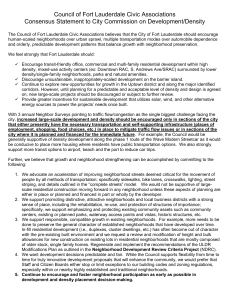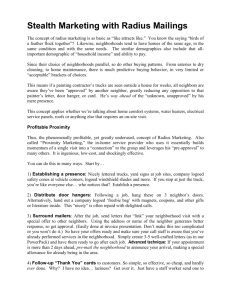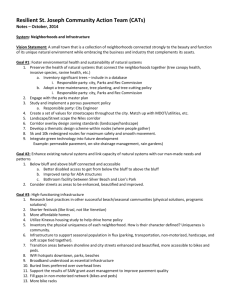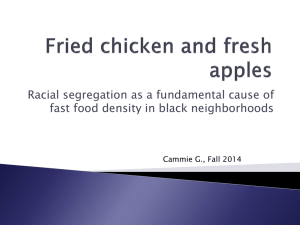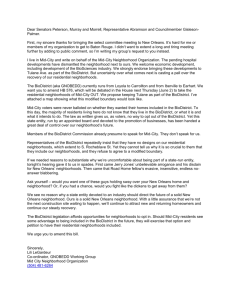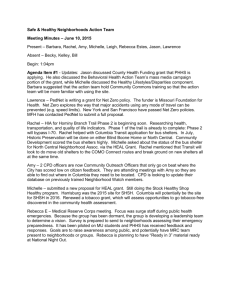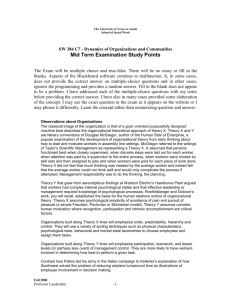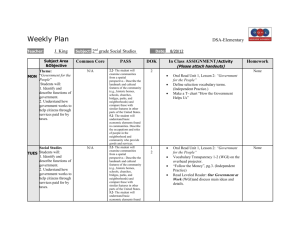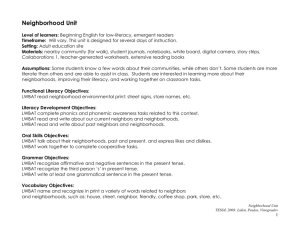Neighborhood Transformation - Collaborative of Neighborhood
advertisement
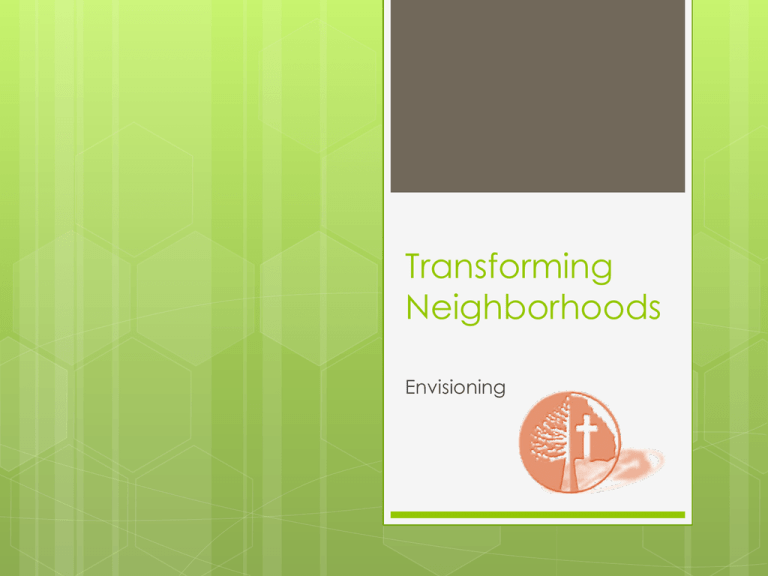
Transforming Neighborhoods Envisioning Transforming Neighborhoods is is Built on Relationships Person to person relationships Person to neighborhood relationships Neighborhood to city relationships Transforming of Neighborhoods and Cities By Equipping Churches to Facilitate Transformed Neighborhoods and People to Maturity in Christ Built on Luke 10:27 Love God with all your mind, body, soul and strength AND Love your neighbor as yourself What is Kingdom Transformation? Gods Kingdom come, His will be done…. Health and wholeness spiritually, physically, emotionally, and socially. Restoration of right relationships with God, self, others, and creation. Transformation is radical change that starts on the inside. As beliefs and values change, behaviors and the resulting effects are also altered. Communities change as individuals change. Transformation comes one person at a time.” (adapted from Miller 1998) Cities Today In 2010, more people live in urban areas than in rural areas. By 2020, 70% of the world will be living in cities of over 1 million. There are 200 cities today with over 1 million people. By 2020, there will be 1450. Urban Neighborhoods People from all over, generally transient No sense of community because they do not know and trust their neighbors More isolated, dependent on professionals No safety net when people need help City is not a community, too big therefore must break into smaller neighborhoods Neighborhoods Smaller in size (8-12) blocks Centers around an elementary school area (since most kids still walk to school) Parents are more involved with kids at this age Parents can be connected to other activities The Approach I. Build a Village in the City II. Focus on Assets III. Gain Participation I. Build a Village in the City We know each other and look out for each other by starting with fun activities and built on self interest Surrounded by a social network, which is not kin or tribe Realize all people have intrinsic value Build trust so help each other Aggregate neighbors into transforming their neighborhood To Build a Village We Must Find Out About Each Other Since most people do not even know the neighbor’s names we need way to find out about people, groups and organizations in the neighborhood. Asset Based Community Development (ABCD) identifies assets found in individuals and groups in the neighborhood. Asset mapping been done for 25 years in USA and a powerful tool for beginning to create sub communities II. Focus on Assets Everyone has assets (skills, knowledge, passions) which may be unknown All people want to be of value to others and not just be a receivers Builds on what is in the neighborhood already, work can be on-going by people in it. Needs focus on problems, assets on solutions III. Gain Participation at People’s Level Expose (Compassion) Engage (Betterment) Easy Entry One Time No Commitment Little Relationship Several Times Heart is Changing Some Commitment Builds New Relationships Own (Development) Deeper Engagement Recruiting Others High Relationship Compassion Betterment Development The Strategy Find churches that are externally focused and want to reach their neighborhoods in a wholistic way. Create new sub-communities and villages. Find assets and interests of people and equips them to accomplish activities built on their selfinterest. Connect small interest groups to neighborhood interests. Major Players in Transforming a Neighborhood A Facilitation/Training Team (launch team) of lay people from the church, and eventually the community, initiates the program--creating awareness and training the next two groups. A Committee, or Neighborhood Association of local leaders from the neighborhood who are trained by launch team & then direct the outreach in their area. Neighborhood Agents of Change (NAC) are local volunteers who learn how to help their neighbors & then visit neighbors to share what they have learned. Activities to Start Launch team from the church begins work on several fronts to raise awareness and participation. Church identifies where members live and group into neighborhoods challenging people to know their neighbors Members begin walking the two square blocks where they live to meet and get to know their neighbors Hold bar-b-ques, block parties etc to begin to develop relationships Begin to do acts of service to elementary school for the designated large neighborhoods. Do asset mapping and begin simple classes based on what people in the neighborhood want to learn Training Local Volunteer Facilitators Facilitators are volunteers therefore only have limited time each week Start with 10 hour Weekend Training for volunteer facilitators by Master Trainer Train multiple churches together each applying in their neighborhood. Churches decide which modules they want additional training on from 10 modules (4 to 7 hours each). Training Is Built On Turning Learning into Action Starts with what people already know and builds. Focuses on the learner not the teacher. People are involved in their own learning instead of being lectured to. They participate in small groups, discussions, role plays, creating stories and songs. All learning is turned into action and not left as head knowledge. The teaching is under the guidance of the Holy Spirit. There are over 2000 participatory lesson plans to be used by the trained on many different topics. Impact Statement Neighborhoods throughout city doing wholistic transformational ministry are networked together to learn from and encourage each other. As the teams come together they find common interests which begin to transform the city as a whole thereby changing it from the inside out. Observable Indicators Transformed neighborhoods from the inside. People know neighbors and helping each other. People knowing and growing in Christ. People taking responsibility for their own lives. Healthy growing churches. Improvement in employment and living conditions. Reduction in disease, crime, drug and alcohol addiction. Other Neighborhoods throughout the city begin to implement Neighborhood Transformation. Resources www.neighborhoodtransformation.net http://facebook.com/pages/Neighborhoo d-Transformation/178206349129 http://urbancheguy.wordpress.com Helping Transform Neighborhoods and People To Maturity In Christ A Ministry of Alliance for Transformational Ministry Stan Rowland & Jeff Bisgrove www.neighborhoodtransformation.net
